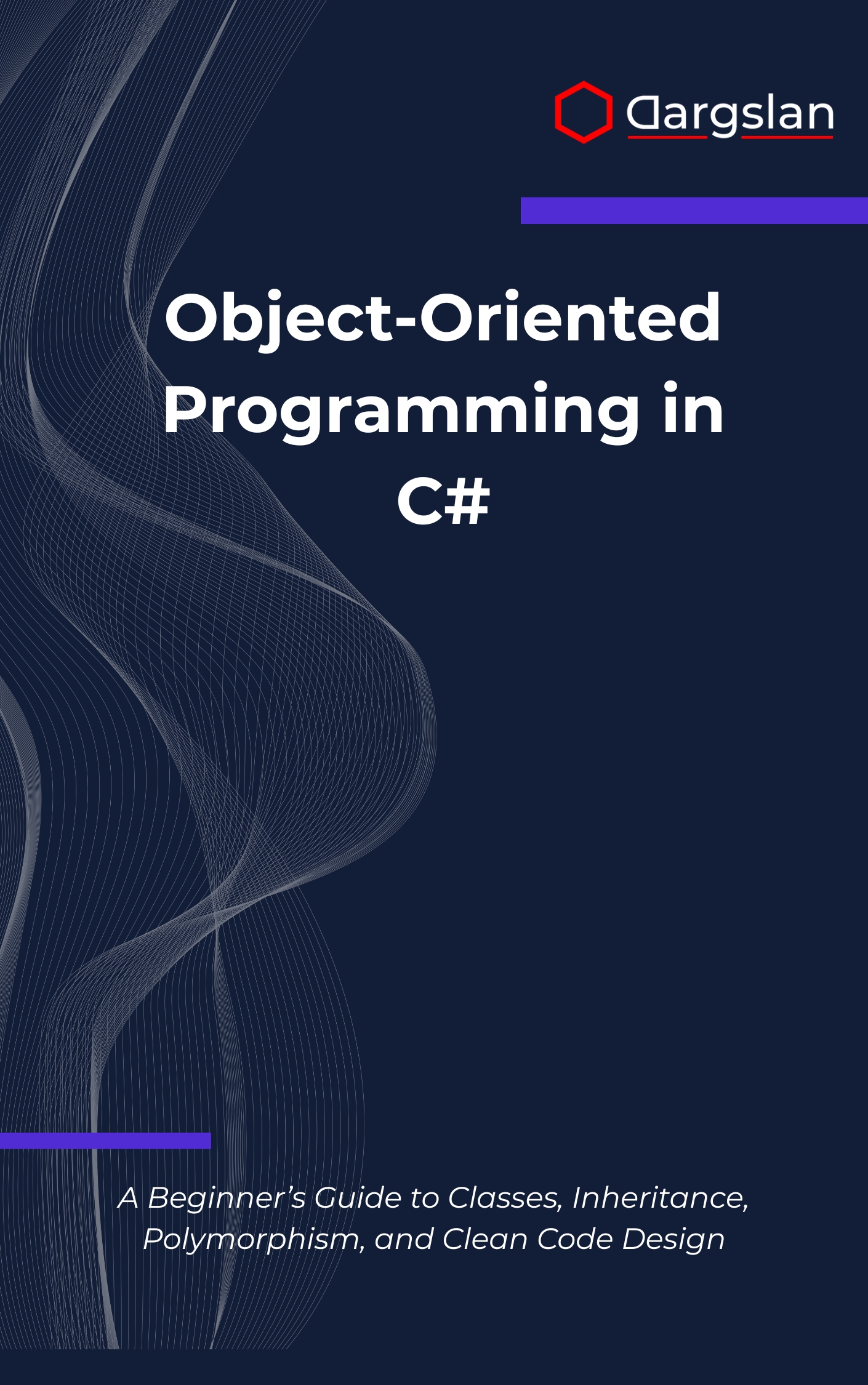Object-Oriented Programming in C#
Object-Oriented Programming in C#: A Beginner's Guide to Classes, Inheritance, and Interfaces,Understand OOP principles in C# and build scalable, reusable applications.

If you’re ready to think beyond syntax and start designing software like a pro, this guide shows you how to build robust systems with confidence. It translates core concepts into everyday C# practices so you can architect clean, flexible applications that scale.
With step-by-step explanations, real-world scenarios, and mini-projects, you’ll move quickly from understanding classes to modeling full solutions. Along the way, you’ll internalize habits that make your code easier to test, extend, and ship.
A Beginner’s Guide to Classes, Inheritance, Polymorphism, and Clean Code Design
Overview
Object-Oriented Programming in C# provides a clear, practical framework for mastering design fundamentals in a language used across enterprise software, cloud services, and game development. As an IT book, programming guide, and technical book, it connects theory to implementation so you write code that’s readable, maintainable, and production-ready. Whether you’re new to C# or formalizing your skills, A Beginner’s Guide to Classes, Inheritance, Polymorphism, and Clean Code Design delivers a complete roadmap to professional-grade development.
You’ll explore object-oriented programming fundamentals, C# classes and objects, encapsulation and data hiding, inheritance and class hierarchies, polymorphism and method overriding, abstraction and interfaces, constructor and destructor patterns, static members and utility classes, object relationships and composition, collections in OOP contexts, exception handling strategies, SOLID principles implementation, clean code design patterns, UML modeling techniques, and professional best practices. Each topic is grounded in examples that mirror real-world use cases, from designing APIs to structuring domain models.
Who This Book Is For
- New C# developers who want a structured path from syntax to system design. Build confidence with classes, interfaces, and composition while learning how to avoid common pitfalls.
- Self-taught programmers transitioning from procedural thinking. Master inheritance, polymorphism, and abstraction to create modular components and extensible architectures.
- Students and career changers preparing for interviews and real projects. Level up with mini-projects, UML diagrams, and SOLID-driven refactoring that demonstrates professional readiness.
Key Lessons and Takeaways
- Design with intent using encapsulation, composition, and clear object relationships. Model domains with class hierarchies that reflect real-world rules without overcomplicating your code.
- Apply SOLID principles to produce flexible, testable modules. See how interfaces, dependency inversion, and single responsibility translate into cleaner designs and fewer regressions.
- Balance power and safety with polymorphism, exception handling strategies, and collections in OOP contexts. Use patterns like factories and strategy to enable extension without rewriting core logic.
Why You’ll Love This Book
The writing is clear, concise, and focused on outcomes—no fluff, just practical guidance you can put to work immediately. You get step-by-step walkthroughs, annotated diagrams, and hands-on practice that bridge the gap between learning concepts and building applications that last.
How to Get the Most Out of It
- Start with fundamentals—classes, encapsulation, and object interactions—then layer on inheritance, polymorphism, and abstraction. Revisit earlier chapters as you design mini-projects to reinforce deeper understanding.
- Apply each concept to a real scenario from your work or study. Refactor an existing module using interfaces, extract a utility into a static class, or introduce composition where inheritance has become brittle.
- Complete the mini-projects end-to-end: design with UML modeling techniques, implement domain entities and services, add collections and error handling, and finish with a cleanup pass following clean code design patterns.
Overview (Deep Dive)
This programming guide doesn’t stop at definitions—it shows how to translate principles into decisions you make every day in C#. Learn when to create a base class versus an interface, how to structure class hierarchies that won’t collapse under change, and where composition outperforms inheritance. You’ll practice constructor and destructor patterns for reliable resource management, and learn when static members and utility classes fit cleanly into a codebase.
Because production software requires resilience, you’ll explore exception handling strategies that protect your domain logic without leaking technical details. You’ll work with collections in OOP contexts to model aggregations and associations, and see how polymorphism and method overriding reduce branching and simplify behavior. Throughout, SOLID principles implementation provides a north star for extensibility and testability.
Planning is part of professional development, so you’ll also use UML modeling techniques to sketch class responsibilities, interfaces, and relationships before writing code. The result is a design-first mindset that accelerates delivery while preventing rework.
Practical Skills You’ll Build
- Model real domains with clean boundaries, meaningful class names, and explicit responsibilities.
- Use abstraction and interfaces to decouple modules and enable plug-and-play implementations.
- Implement method overriding and polymorphic dispatch to replace complex conditionals.
- Design object relationships and composition to express business rules without overusing inheritance.
- Adopt professional best practices, including naming conventions, visibility strategies, and dependency management.
From Concepts to Codebases
Every chapter connects OOP theory to the C# language features you use daily. You’ll see where access modifiers reinforce encapsulation and how generics and collections align with object modeling. Patterns are introduced as problem-solution pairs so you can recognize when to apply them and when to keep things simple.
By the final mini-project, you’ll integrate interfaces, class hierarchies, composition, and exceptions into a cohesive architecture. More importantly, you’ll know how to evaluate trade-offs and communicate your design rationale like a professional.
Get Your Copy
Build software that’s easier to extend, test, and maintain—start mastering Object-Oriented Programming in C# the right way. If you want a practical, results-driven path to clean code and confident design, this is your next step.




